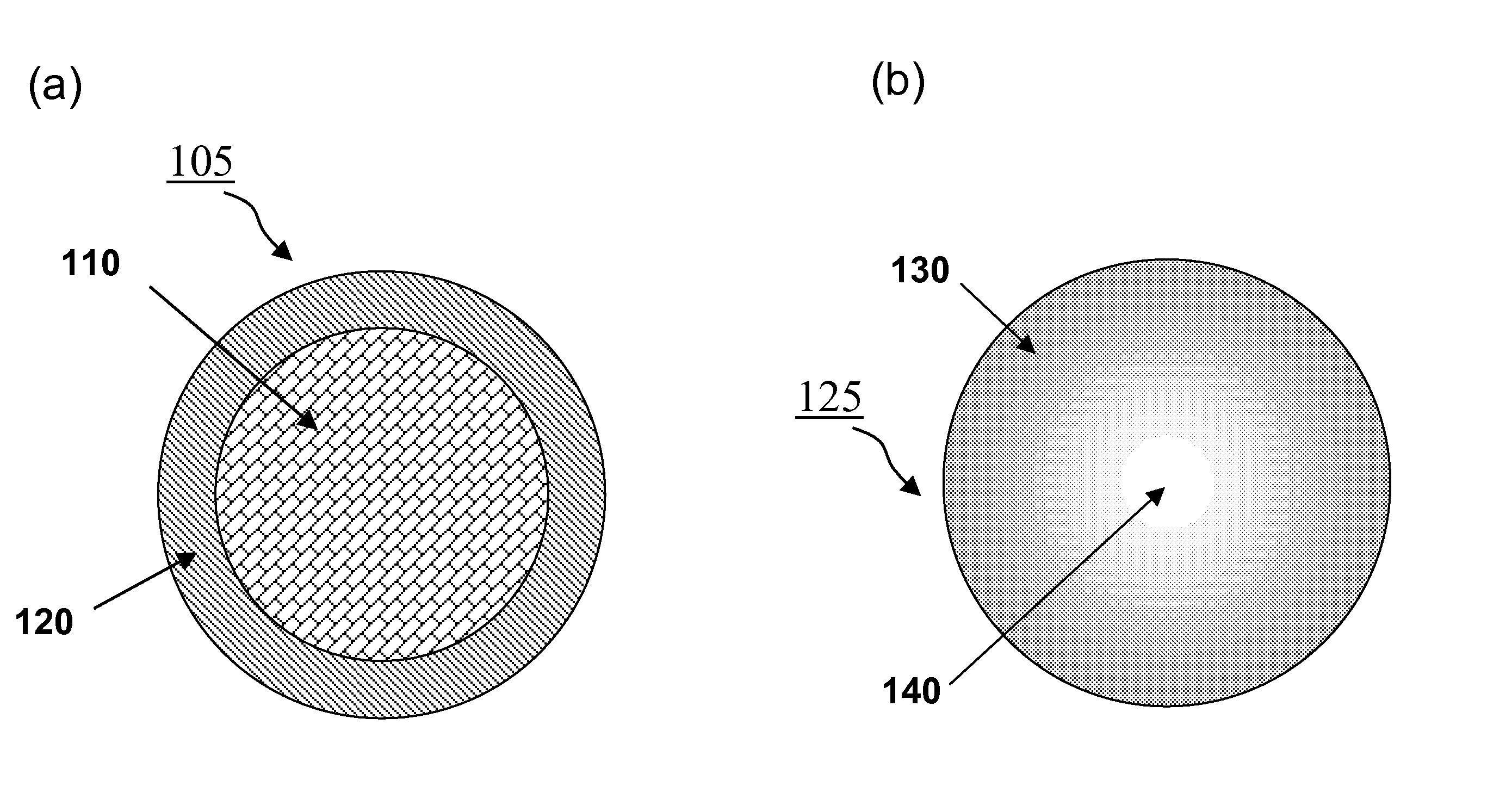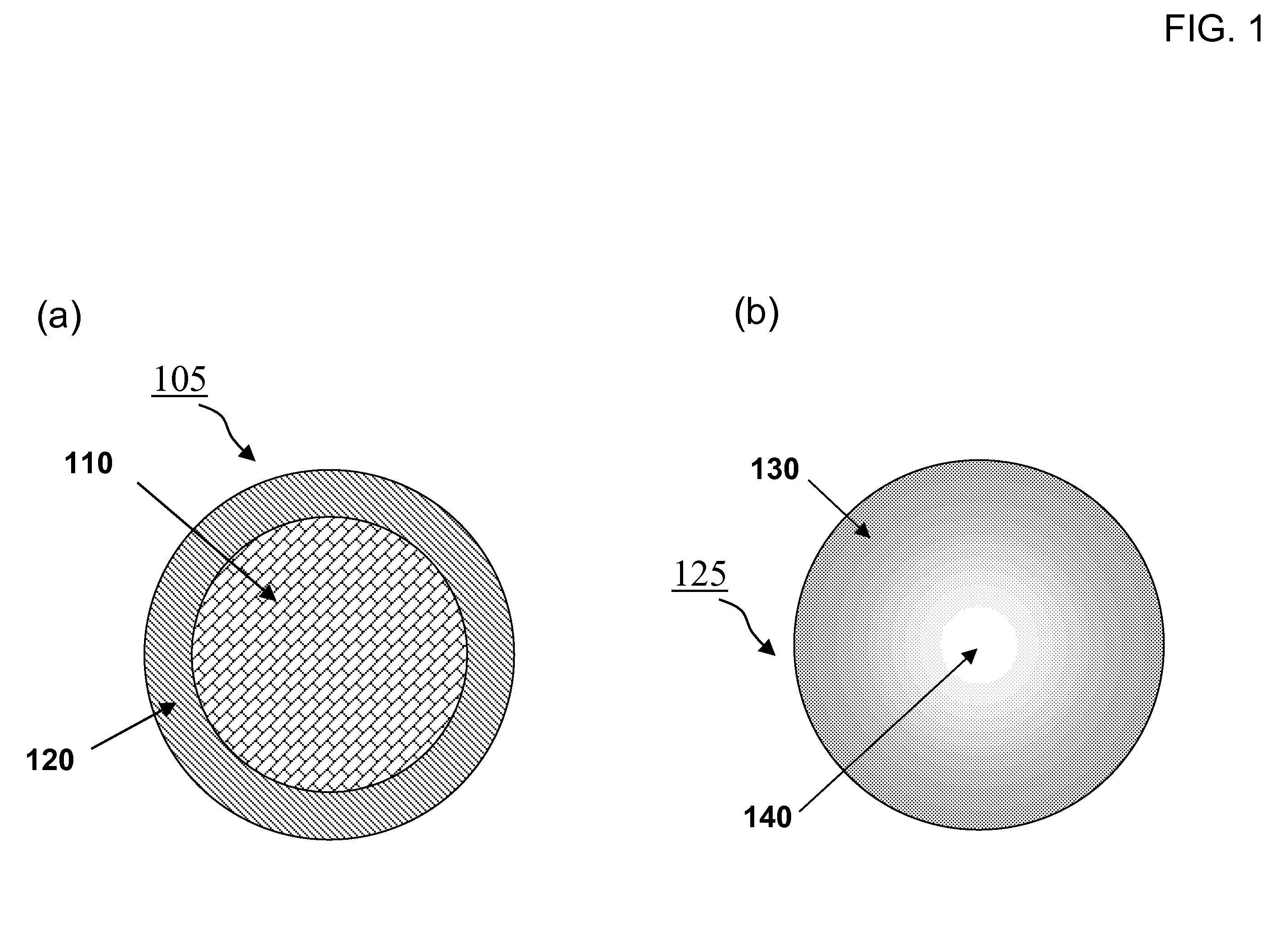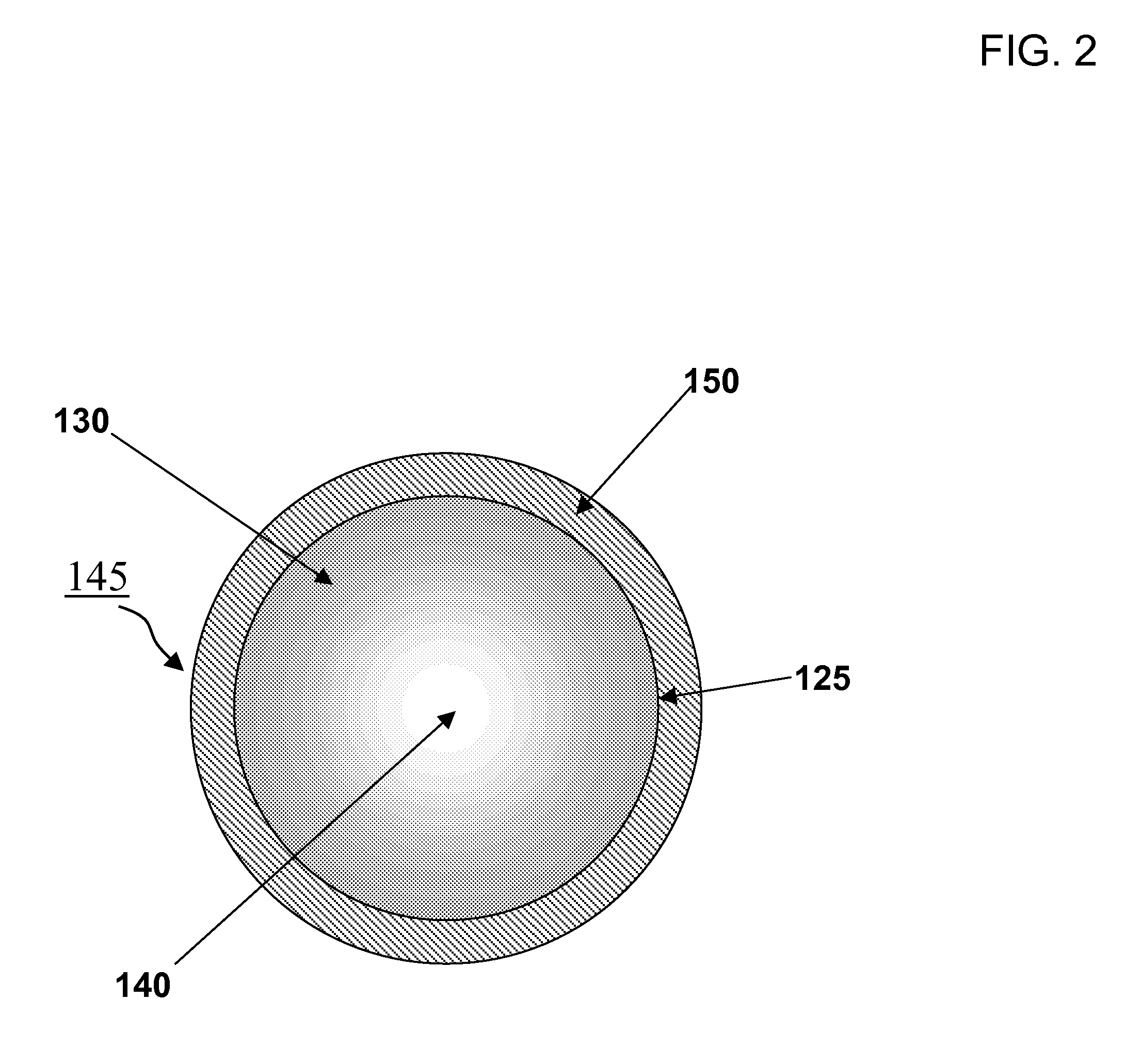Making colloidal ternary nanocrystals
a technology of colloidal nanocrystals and nanocrystals, which is applied in the direction of polycrystalline material growth, crystal growth process, after-treatment details, etc., can solve the problems of high cost, low efficiency and increased radiative lifetime of colloidal quantum dots compared with their self-assembled counterparts, etc., to achieve short radiative lifetime, short radiative lifetime, and stable fluorescence
- Summary
- Abstract
- Description
- Claims
- Application Information
AI Technical Summary
Benefits of technology
Problems solved by technology
Method used
Image
Examples
example i-1
Inventive Example I-1
Preparation of the Inventive Ternary Core / Shell Non-Blinking Nanocrystals, CdxZn1-xSe / ZnSe
[0053]All synthetic routes were carried out using standard airless procedures with a dry box and a Schlenk line. The first step in creating the ternary cores was to form CdSe cores. Typically, 0.0755 g of TDPA (1-tetradecylphosphonic acid), 4 g of pre-degassed TOPO (trioctylphosphine oxide), and 2.5 g of HDA (hexadecylamine) were added in a three-neck flask. The mixture was degassed at 100° C. for half an hour. The stock solution of 1 M TOPSe was prepared by dissolving of 0.01 mol selenium in 10 ml TOP (trioctylphosphine). 1 ml of TOPSe was added to the flask and the mixture was heated to 300° C. The cadmium stock solution (0.06 g of CdAc2 in 3 ml TOP) was quickly injected under vigorous stirring resulting in nucleation of CdSe nanocrystals, after which time the temperature was set at 260° C. for further growth. After 5-10 min, the heating was removed and the flask was allo...
example i-2
Inventive Example I-2
Preparation of the Inventive Ternary Core / Shell Non-Blinking Nanocrystals, CdxZn1-xSe / ZnSeS
[0056]All synthetic routes were carried out using standard airless procedures with a dry box and a Schlenk line. The first step in creating the ternary cores was to form CdSe cores. In a three-neck flask, 0.2 mmol of CdO and 0.5 g of stearic acid were heated to 180° C. until the mixture went clear. Inside of a dry box, 3 ml of HDA and 6 ml of TOPO were added to the mixture. On a Schlenk line the mixture was heated to 310° C. under vigorous stirring, whereupon 1 ml of 1 M TOPSe was injected. The temperature was then lowered to 290-300° C. and stirred for an additional 10 minutes.
[0057]Next a ZnSe shell was formed on the CdSe cores. After cooling the core crude solution back to room temperature, it was reheated to 190° C. In a syringe was added 260 μl of 1M diethylzinc in hexane, 260 μl of 1M TOPSe, and 2 ml of TOP. The contents of the syringe were then added to the CdSe cor...
PUM
| Property | Measurement | Unit |
|---|---|---|
| temperature | aaaaa | aaaaa |
| temperature | aaaaa | aaaaa |
| external quantum efficiency | aaaaa | aaaaa |
Abstract
Description
Claims
Application Information
 Login to View More
Login to View More - R&D
- Intellectual Property
- Life Sciences
- Materials
- Tech Scout
- Unparalleled Data Quality
- Higher Quality Content
- 60% Fewer Hallucinations
Browse by: Latest US Patents, China's latest patents, Technical Efficacy Thesaurus, Application Domain, Technology Topic, Popular Technical Reports.
© 2025 PatSnap. All rights reserved.Legal|Privacy policy|Modern Slavery Act Transparency Statement|Sitemap|About US| Contact US: help@patsnap.com



